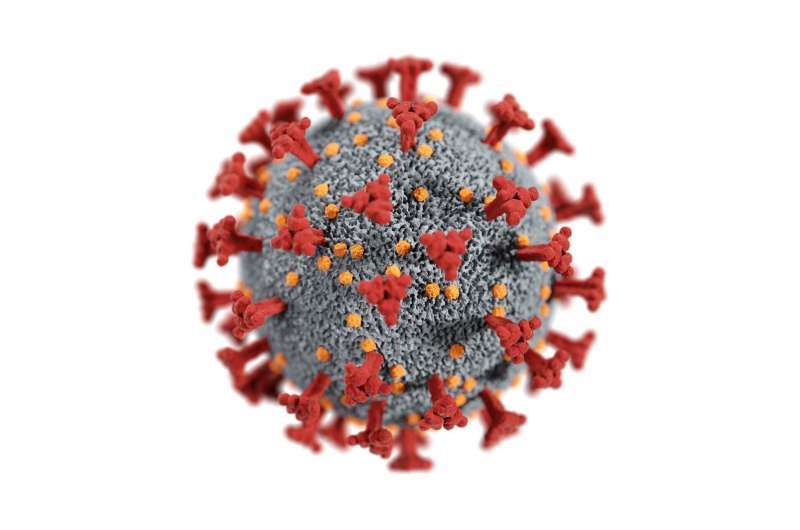
A molecular study published today in Science reveals how the mutations in delta and kappa variants of the pandemic coronavirus help the variants avoid recognition by antibodies.
Most vaccine developers have concentrated on targeting the spike glycoprotein on the surface of the pandemic coronavirus. The spike glycoprotein includes an N-terminal domain that enhances cell binding, and a receptor binding domain that engages with the ACE2 receptor on host cells.
Most antibodies against the pandemic coronavirus latch onto specific sites on these two domains. Consequently, coronavirus variants have mutated their N-terminal domain and receptor binding domain to evade these antibodies, as is the case for the delta and kappa variants.
“These are the major targets of neutralizing antibodies in convalescent and vaccinated individuals, thereby raising concerns about the efficacy of available vaccines and therapeutic antibodies against these [kappa and delta] variants,” the researchers wrote in today’s Science paper.
The project reported today was led by David Veesler’s lab in the Department of Biochemistry at the University of Washington School of Medicine in Seattle. Veesler is also an Investigator of the Howard Hughes Medical Institute. Contributions to the study were made by UW Medicine infectious disease physicians, researchers from the UW Center for Emerging and Re-emerging Infectious Diseases, scientists from the UW Medicine Institute for Protein Design, as well as researchers from Vir Biotechnology and its subsidiary, Humabs Biomed SA.
The lead authors on the study were Matthew McCallum and Alexandra Walls, both at the UW School of Medicine Department of Biochemistry.
The scientists obtained plasma samples from 37 individuals, ranging in age from 22 to 66, who had received either two doses of the Moderna or Pfizer/BioNtech or one dose of the Janssen COVID-19 vaccines. Their data demonstrated that the delta, kappa and delta+ variants reduced virus neutralizing potency from vaccine-induced antibodies. The delta+ variant caused the greatest decrease. Antibodies from half of the Janssen-vaccinated individuals completely lost the ability to neutralize one or more variants in the laboratory assay.
Although the kappa and delta+ variants were better able to evade vaccine-elicited antibody neutralization, it was the delta variant that became dominant worldwide by early this summer. Its high incidence globally is in keeping with its ability to spread more easily, to replicate more readily and to create greater viral loads in the noses and throats of infected individuals. The researchers say that further studies would be needed to explore any interplay between immune evasion and improved transmissibility as a variant’s evolutionary strategy for achieving global domination as the leading cause of COVID infections.
The researchers went on to use cryoelectronmicroscopy to closely examine the structures of the main infectivity structure in the variant coronaviruses. They wanted to understand how the variant mutations lowered sensitivity to antibodies. The delta variant came up with a unique molecular solution, including what the researchers described as “a striking remodeling of the N-terminal domain,” which underscores its plasticity in dodging antibodies aimed at it.
One antibody, called S2X303, stood out because of its skill in cross-reacting with several variants, compared to all other neutralizing antibodies. By exploring how this antibody bound to the N-terminal domain, the scientists got a clearer picture of how it attacks its target. This antibody takes an unusual angle of approach to make a unique contact footprint within the N-terminal domain.
Despite the tendency of viruses to overcome immune defenses and resist treatment, there is some hope on the horizon. S309, the parent of a COVID-19 antibody that has received FDA emergency use authorization, so far has not had its effectiveness diminished by genetic changes in the pandemic coronavirus. It works by recognizing a part of the receptor binding domain that does not change. There has also been recent discovery of other antibodies that can recognize parts of the receptor binding domain that remains conserved in several species and strains of sarbecovirus. These findings might lead to the clinical development of more antibodies for the prevention and treatment of COVID-19.
Source: Read Full Article
